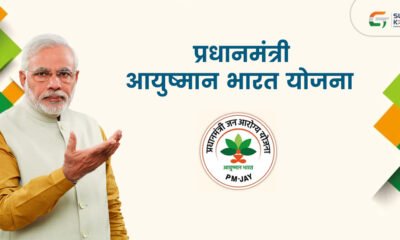Microfinance Loans
Microfinance Loans in India

Microfinance has grown to be a very powerful tool for financial inclusion and poverty alleviation in India. It avails small-scale financial services to low-income people who normally do not have access to traditional banking systems. In this paper, the authors look into the issues involved in microfinance loans in India: their impact, challenges, and prospects for the future.
Definition and Concept of Microfinance
Microfinance is a term used to signify a package of financial services, including small loans, savings accounts, and insurance services extended to economically disadvantaged people. The main activity of microfinance in India is the provision of small loans for starting or expanding small businesses, coping with emergent situations, and investing in education and healthcare.
Historical Development of Microfinance in India
The roots of microfinance in India go as far back as 1974 with the Self-Employed Women’s Association (SEWA) Bank. However, it was only during the 1990s that it started picking up with SHG formation and the establishment of specialized MFIs.
Key Players in Indian Microfinance Sector
- Microfinance Institutions: Specialized financial institutions engaged in the delivery of microloans and other services.
- SHGs: These are community-based groups that pool their savings and consequently make loans to their members.
- NBFCs: Few NBFCs have; operational microfinance as the core business area
- Banks: Many commercial banks have microfinance divisions or partner with MFIs
- NGOs: Few NGOs run microfinance programs as a part of their developmental initiatives.
Types of Microfinance Loans in India
- Joint Liability Group Loans: Lending to a group in which the individuals mutually guarantee the repayment.
- Individual Loans: Smaller loans given directly to individuals, mostly for certain purposes.
- SHG-Bank Linkage Loans: Loans offered to SHGs by banks for on-lending to members.
- Micro-Enterprise Loans: Especially meant for small businessmen.
- Agricultural Microfinance: Products of loan designed for small and marginal farmers.
Regulatory Framework for Microfinance in India:
The Reserve Bank of India is the chief regulator of the microfinance sector. Some of the critical regulations are: interest rate caps, preventing exploitation; limits on the size of loans to ensure the focus on low-income borrowers; ensuring transparency and fair practices in lending; and capital adequacy norms for MFIs.
The Microfinance Institutions (Development and Regulation) Bill will lend a cohesive regulatory framework to the sector.
Impact of Microfinance on Financial Inclusion
The role of microfinance in enhancing financial inclusion in India can be stated thus:
- Reach to the unbanked: Extending financial services to the excluded
- Women empowerment: Most microfinance programmes target women borrowers
- Poverty alleviation: Generation of income and building of assets
- Rural development: Extending services to people mostly in the rural areas
Challenges Confronting the Micro-finance Sector in India
- Over-indebtedness: Risk of falling into debt traps by taking multiple loans
- Servicing small loans in remote areas is costly.
- Political interference: Loan waivers and such political actions undermine the development of repayment culture.
- Limited product diversification: There is a need to have greater product diversification beyond simple loans.
- Technological challenges: The rural setting complicates the adoption of digital technologies.
Innovations in Microfinance
- Digital lending: Using mobile and online platforms for loan applications and disbursement
- Fintech Partnerships: Collaboration of MFIs with technology companies in enhancing efficiency
- Credit Scoring: Alternative methods developed to evaluate borrowers with no formal credit history
- Micro-Insurance: Group insurance products on small scale, often linked to loans
- Financial Literacy Programs: Educating the borrowers in better financial management and ways of responsible borrowing
Case Studies: Beating the Odds in Indian Microfinance
- Bandhan Bank: From NGO to successful MFI to full-fledged bank
- SKS Microfinance (now Bharat Financial Inclusion Ltd): One of India’s largest MFIs, now merged with IndusInd Bank
- Mann Deshi Bank: A co-operative bank targeting women entrepreneurs in rural areas
Government Initiatives Supporting Microfinance
- Pradhan Mantri Mudra Yojana (PMMY): Government scheme providing loans up to ₹10 lakh to micro-enterprises
- National Rural Livelihood Mission (NRLM): Promotes SHGs and provides them with bank linkages
- Micro Units Development & Refinance Agency (MUDRA): Provides refinance to the MFIs
Impact of COVID-19 on Microfinance in India
The pandemic took a heavy toll on the microfinance sector:
- Inability to repay due to lockdowns and slowing economy
- Demand surge for emergency loans
- Accelerated Digitization of lending and repayment processes
- Government response in the form of moratorium on repayment of loans from borrowers
Future Prospects of Micro-finance in India
- Greater focus on digital technologies reduces costs, enhances reach
- Better customer protection and responsible lending
- New products, like micro-pension and micro-savings, are promising
- Centre continues to push for financial inclusion through microfinance
- Consolidation in the sector as smaller MFIs merge or tie up with larger peers
Conclusion
Microfinance has played a critical role in furthering financial inclusion and economic progress in India. While challenges remain, the sector keeps getting evolved with technology and inclusions of services. As India strives for comprehensive financial inclusion, microfinance will prove to be a critical tool in reaching unbanked and underbanked. The future of microfinance in India will depend on the fact that there is a need to create a balance between growth, responsible lending practices, and leveraging technology for efficiency and reach. It is envisaged that, with sustained support from regulators and the government, not-for-profit microfinance will make much more significant contributions to poverty alleviation and economic empowerment in the coming years.

-

 Credit Card1 year ago
Credit Card1 year agoHow to Foreclose ICICI Credit Card EMI
-

 Saving Schemes2 years ago
Saving Schemes2 years agoHow to Check Sukanya Samriddhi Account Balance by SMS
-

 Credit Card1 year ago
Credit Card1 year agoHow to Unblock Credit Card ICICI
-

 Government Schemes2 years ago
Government Schemes2 years agoGovernment Schemes for Girl Child
-

 Saving Schemes2 years ago
Saving Schemes2 years agoHow to Open a Sukanya Samriddhi Account Online: A Step-by-Step Guide
-
Credit Card1 year ago
How to Check ICICI Credit Card Balance
-

 Credit Card1 year ago
Credit Card1 year agoHow to Change Address in ICICI Credit Card
-

 Government Schemes1 year ago
Government Schemes1 year agoHow to Apply for Ayushman Bharat Yojana: A Step-by-Step Guide